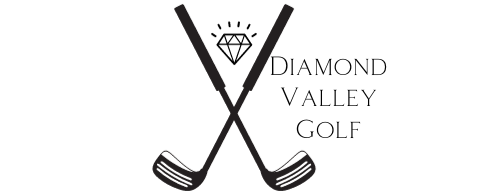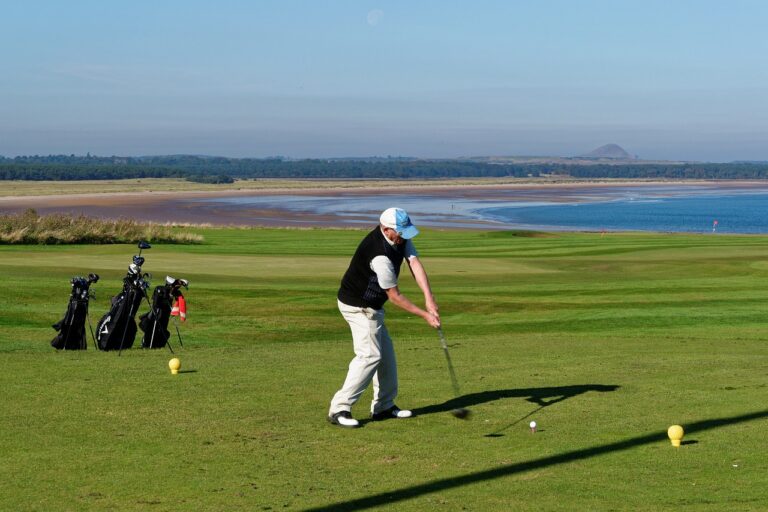Golf is all about making small adjustments that lead to big results. One of the most talked-about techniques is learning how to swing from the inside. It might sound complicated, but trust me, once you get the hang of it, it feels like a natural part of your swing.
I’ve been working on it myself and saw a huge boost in both distance and control. You don’t need fancy gadgets or years of practice, just a few tweaks in how you approach your swing.
Stick around, and I’ll walk you through some simple tips that can help you add power instantly to your game.
Set Up Correctly
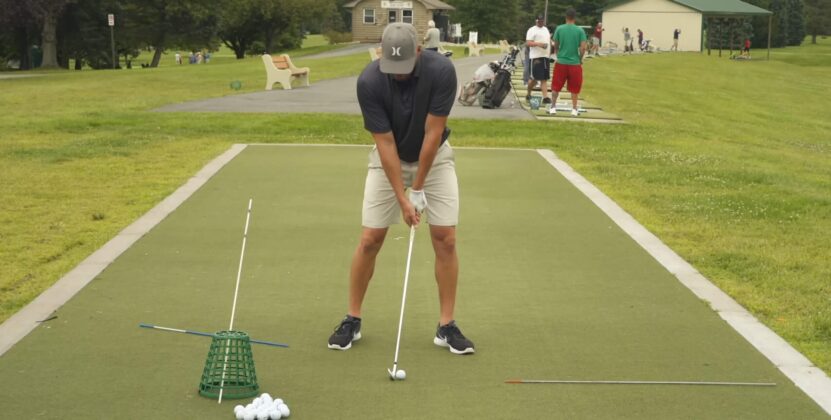
Setting up your stance is the foundation for a strong swing. Without a proper setup, your swing will struggle no matter how good your form is. Everything begins here, and getting this part down will help with consistency, power, and accuracy.
Body alignment
Start by aligning your feet, hips, and shoulders parallel to your target line. This alignment will guide your swing path, making it easier to stay on track.
Ball position
Position the ball slightly forward in your stance, especially for drivers. For irons, the ball should be more centered. The ball’s position affects your club’s angle of attack and impact quality.
Posture
Keep your spine straight, knees bent, and maintain a slight forward tilt from the hips. This position gives you the right balance and allows for a full rotation without strain. Avoid slouching or standing too tall.
Grip
Hold the club with a relaxed grip, but firm enough to maintain control. A grip that’s too tight restricts your wrist movement, while a grip that’s too loose will lead to mis-hits.
Common Mistakes
- Poor alignment: Misaligned body angles often cause slices or hooks.
- Improper ball position: If the ball is too far back or forward, it affects both distance and control.
- Stiff posture: A rigid posture makes it hard to rotate freely, reducing your ability to generate power.
Focus on Your Takeaway
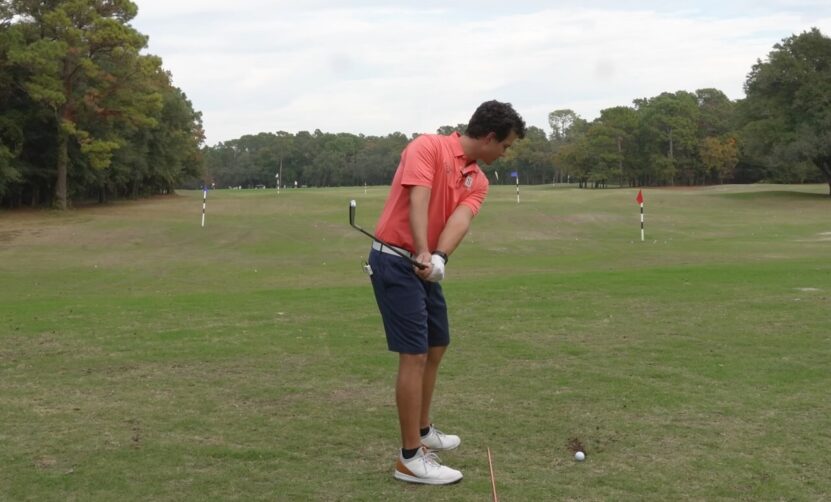
The takeaway is where the swing really starts, and getting it right makes everything easier. A solid takeaway sets you up for better power and accuracy later in the swing. If you rush or get it wrong, the rest of the swing will likely fall apart.
Start slow and smooth
The takeaway should be a controlled movement, not rushed. A smooth start helps you stay balanced and prevents any unnecessary tension.
Keep the club inside the target line
During the takeaway, make sure your clubhead stays slightly inside the target line. This promotes the inside-out swing path, which is key for generating power and preventing slices.
Focus on shoulder turn
Let your shoulders turn naturally without forcing it. Your body should coil like a spring, ready to release energy on the downswing.
Common Mistakes
- Too much wrist action: Relying too much on your wrists can cause an inconsistent path. Keep your wrists quiet until later in the swing.
- Pulling the club outside: Starting the swing with the club outside the target line is a recipe for disaster. It often leads to an outside-in swing path and, eventually, a slice.
- Rushing the movement: A rushed takeaway throws off your timing. Take your time and focus on smooth, controlled movements.
Use Your Lower Body
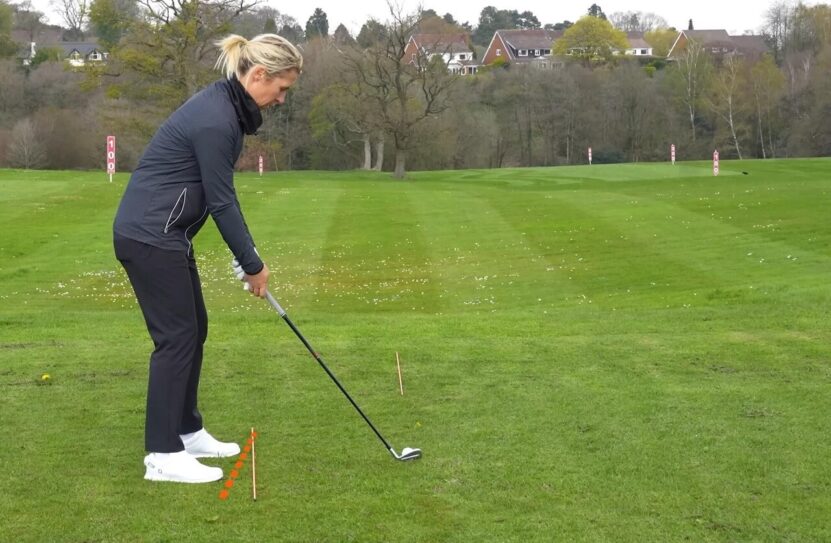
Power in your golf swing comes from your lower body, not just your arms. Your hips, legs, and core provide the driving force that helps you hit the ball farther and more consistently. If you don’t engage your lower body properly, your swing will lack power and control.
Initiate the Downswing with Your Hips
The first movement in your downswing should come from your hips. As you turn your hips toward the target, the rest of your body follows naturally, allowing the club to drop into the inside path.
Shift Your Weight
As you swing, transfer your weight from your back foot to your front foot. This weight shift helps generate power and keeps you balanced throughout the swing.
Keep Your Knees Flexed
Maintaining a slight bend in your knees helps with stability and allows for a smooth hip rotation. Straightening your knees during the swing can throw off your balance and reduce your power.
Common Lower Body Mistakes
- Not rotating the hips: Failing to rotate your hips results in an arm-dominated swing, which lacks power. Your lower body should lead the movement.
- Swaying instead of rotating: Some golfers sway their bodies rather than rotating their hips. This leads to inconsistent shots and weak contact.
- Not shifting weight: Staying flat-footed or keeping your weight on your back foot results in a loss of power and control.
Square the Clubface
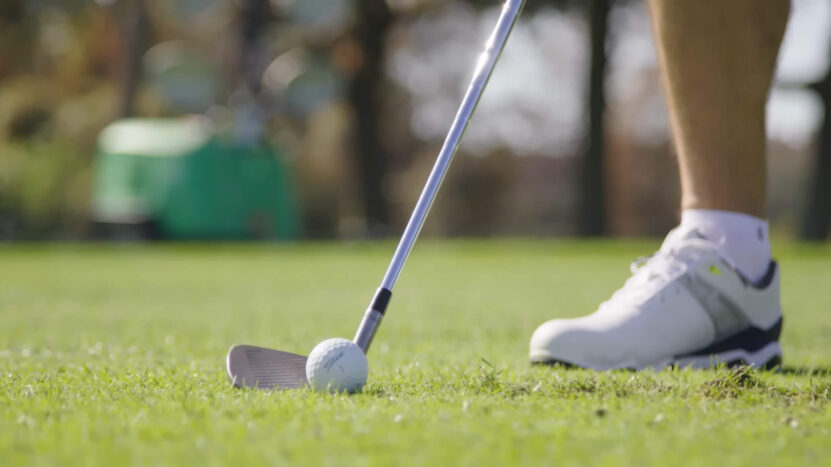
Squaring the clubface at impact is crucial for a solid, straight shot. If the clubface is open or closed when it hits the ball, you’ll either slice or hook the shot. By squaring it up properly, you’ll generate a cleaner strike and more consistent ball flight.
Check Your Grip
The position of your hands can determine the angle of the clubface at impact. A neutral grip helps keep the clubface square as you swing through the ball.
Lead with Your Hands
As you approach impact, your hands should be slightly ahead of the ball. This helps control the clubface and ensures a square impact.
Focus on Wrist Position
Your lead wrist (left for right-handed golfers) should stay flat as you come through the ball. A cupped or bent wrist will cause the clubface to open or close at impact.
Common Mistakes
- Open clubface: An open clubface leads to a slice, sending the ball right of the target. Check your grip and ensure your hands lead the club at impact.
- Closed clubface: A closed clubface will cause a hook, sending the ball left of the target. Keep your grip neutral and focus on your wrist position.
- Early wrist release: Releasing your wrists too early causes inconsistent contact and often results in mis-hits.
Practice Effective Drills
To perfect your inside-out swing, you need to practice regularly with specific drills. Drills help build muscle memory and refine the different parts of your swing, making it easier to execute under pressure.
Alignment stick drill
Place an alignment stick just outside the ball. As you swing, make sure your clubhead stays inside the stick on the backswing and downswing. This encourages an inside-out path and prevents an outside-in slice.
Pause at impact drill
During your practice swings, pause just before impact and check your body position. Make sure your hips have rotated, your weight has shifted to your front foot, and the clubface is square.
Mirror drill
Stand in front of a mirror and practice your swing slowly. Watch how your body moves, making sure you’re rotating instead of swaying and keeping your arms and club in the correct positions throughout the swing.
FAQs
How do I stop coming over the top in my swing?
Coming over the top is usually caused by using too much upper body during the downswing. Focus on initiating the downswing with your lower body, especially your hips. Practice drills like the alignment stick drill to train your swing path and keep the club on an inside track.
Why do I struggle to square the clubface at impact?
Struggling to square the clubface often comes from poor grip or wrist position. Make sure your grip is neutral, and focus on keeping your lead wrist flat or slightly flexed through impact. Practice the pause-at-impact drill to get a feel for proper hand and wrist positioning.
How can I increase my swing speed without losing control?
To increase swing speed, focus on generating power from your lower body while maintaining good balance. A smooth, steady tempo is key—don’t rush the swing. Drills like the hip rotation drill can help you add speed without sacrificing accuracy.
Should I use different drills for irons and drivers?
Yes, there are slight differences in how you swing irons versus drivers. For irons, you want a more descending blow, while drivers benefit from an upward strike. Adjust your ball position and drill focus accordingly. Alignment stick drills work for both, but pay attention to the club’s angle at impact.
How can I stop hitting fat shots?
Fat shots happen when you hit the ground before the ball, often due to improper weight transfer. Make sure your weight shifts from your back foot to your front foot during the downswing. Practicing the mirror drill can help you spot if you’re leaning back or failing to shift weight correctly.
Last Words
Mastering the inside-out swing can dramatically improve your golf game by giving you more power, control, and accuracy. It all starts with a solid setup, followed by focusing on your takeaway, engaging your lower body, and squaring the clubface at impact. Avoiding common mistakes and practicing specific drills will help you lock in these techniques.
